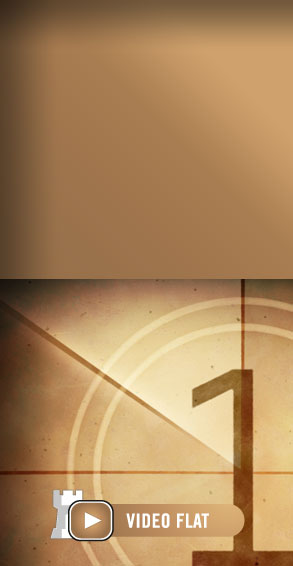"Pretty good for an old fart..."
This weeks pair of games come from American Doug Schwtke, who is 65 and has been playing tournament chess since 1977.
He writes:
 I live in Fort. Worth, Texas and have three “kids" and two grandkids. All three of my kids have married someone I really like. I spent a long career in pharmaceutical manufacturing. And in my semi-retirement currently work with handicapped adults in a dayhab. The company is called Expanco. We provide the dignity of work to a group of people that want to participate in life. The clients have a safe place to work and be with others with disabilities. I play tournament chess on the weekends whenever possible. I play skittles with a group that meets in downtown Fort. Worth. Our weather is usually great so we play outside whenever possible. At my age, significant chess improvement probably isn't going to happen. I play for the thrill of a good game. My other hobby is reading. I read a diverse collection of books from religion to political theory to military history. I have five direct ancestors who participated in the American Revolution and am a member of the Sons of the American Revolution.
I live in Fort. Worth, Texas and have three “kids" and two grandkids. All three of my kids have married someone I really like. I spent a long career in pharmaceutical manufacturing. And in my semi-retirement currently work with handicapped adults in a dayhab. The company is called Expanco. We provide the dignity of work to a group of people that want to participate in life. The clients have a safe place to work and be with others with disabilities. I play tournament chess on the weekends whenever possible. I play skittles with a group that meets in downtown Fort. Worth. Our weather is usually great so we play outside whenever possible. At my age, significant chess improvement probably isn't going to happen. I play for the thrill of a good game. My other hobby is reading. I read a diverse collection of books from religion to political theory to military history. I have five direct ancestors who participated in the American Revolution and am a member of the Sons of the American Revolution.
Doug sent two interesting battles from Open tournaments and annotated them quite extensively to which I've as usual added my own comments as JS. We start with the Agony, in which he built up a powerful attack with a piece sacrifice but then missed several opportunities to crown the attack with a mating finish, before finally losing.
Click or tap on the second game in the game list below the board to switch
Opening with the Chigorin shows your intention to play for a win right from the outset. After 2...Nc6 Black's pieces fly into the game putting pressure on White's position from a very early stage. This opening is ideal for the type of player who strives for an unconvential yet attacking game right from the start.
Submit your games and win free Premium!  At the airport, in the hotel or at home on your couch: with the new ChessBase you always have access to the whole ChessBase world: the new ChessBase video library, tactics server, opening training App, the live database with eight million games, Let’s Check and web access to playchess.com
At the airport, in the hotel or at home on your couch: with the new ChessBase you always have access to the whole ChessBase world: the new ChessBase video library, tactics server, opening training App, the live database with eight million games, Let’s Check and web access to playchess.com
Did you enjoy the column and instructive analysis by GM Jonathan Speelman? Do you wish you could have a world-renowned grandmaster analyzing your play? You can!
To submit your games just upload a PGN or ChessBase file, along with your name and e-mail address. Send one success story (Ecstasy) and one loss (Agony).
Tell why you chose them, where or when they were played. Please also include your email address, so Jon can reply, and preferably a photo of yourself for our article.
If your game is selected Jon will contact you personally, and not only will you get free detailed commentary of your games by one of chess’s great authors and instructors, and former world no. 4 player, but you also win a free three-month ChessBase Premium Account!
A three-month Premium subscription to ChessBase Account means you get:
- Premium access to the Playchess server with ratings, simuls, lectures, and live commentary of top games
- Access to all Web apps with no restrictions, such as the Cloud database, and more!
- Full access to the Video archive, which not only includes all the past lectures by Daniel King, Simon Williams and others, but also a large number of full ChessBase products you would normally need to buy in the ChessBase Shop but that you can view for free as a Premium subscriber.
See also:


















 I live in Fort. Worth, Texas and have three “kids" and two grandkids. All three of my kids have married someone I really like. I spent a long career in pharmaceutical manufacturing. And in my semi-retirement currently work with handicapped adults in a dayhab. The company is called Expanco. We provide the dignity of work to a group of people that want to participate in life. The clients have a safe place to work and be with others with disabilities. I play tournament chess on the weekends whenever possible. I play skittles with a group that meets in downtown Fort. Worth. Our weather is usually great so we play outside whenever possible. At my age, significant chess improvement probably isn't going to happen. I play for the thrill of a good game. My other hobby is reading. I read a diverse collection of books from religion to political theory to military history. I have five direct ancestors who participated in the American Revolution and am a member of the Sons of the American Revolution.
I live in Fort. Worth, Texas and have three “kids" and two grandkids. All three of my kids have married someone I really like. I spent a long career in pharmaceutical manufacturing. And in my semi-retirement currently work with handicapped adults in a dayhab. The company is called Expanco. We provide the dignity of work to a group of people that want to participate in life. The clients have a safe place to work and be with others with disabilities. I play tournament chess on the weekends whenever possible. I play skittles with a group that meets in downtown Fort. Worth. Our weather is usually great so we play outside whenever possible. At my age, significant chess improvement probably isn't going to happen. I play for the thrill of a good game. My other hobby is reading. I read a diverse collection of books from religion to political theory to military history. I have five direct ancestors who participated in the American Revolution and am a member of the Sons of the American Revolution.




